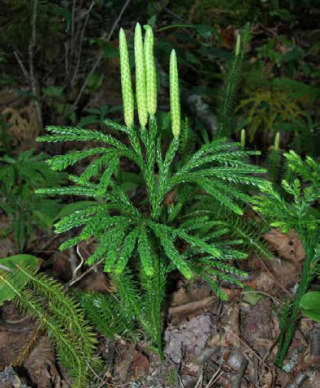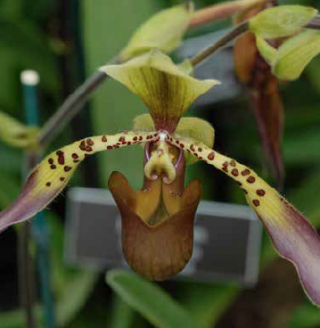One Thousand Plants, One Billion Years of Evolution
Posted in Garden News on December 12, 2019 by Samantha Frangos
Samantha Frangos is a Laboratory Technician at the Pfizer Plant Research Laboratory of The New York Botanical Garden.

The green plant tree of life is built upon many evolutionary innovations. Plants have come a long way since they began as single-celled organisms one billion years ago. They have transitioned from water to land and managed to become the beautiful, towering, flowering and fruiting beings that are the backbone of life on earth. They have complex life histories—creating vascular systems, waxy cuticles, spores, seeds, and flowers. These innovations define key turning points in the history of green plants, and they are what separate the major plant groups: green algae, mosses and liverworts, ferns, gymnosperms, and flowering plants.
The One Thousand Plant Transcriptomes Initiative, also known as the 1KP initiative, is a global collaboration of nearly 200 plant scientists, including Dennis Wm. Stevenson, Ph.D., NYBG Vice President for Science and Cullman Senior Curator. “This longterm project integrates fieldwork, herbarium research, and living collections with the latest in laboratory and information sciences as an international collaboration,” Dr. Stevenson said. For almost 10 years, this group has been attempting to sequence the genes of one thousand plants, spanning every plant family on the tree of life. The sequencing of these species, 1,124 in total, brings science significantly closer to understanding how the tree of life works in the plant kingdom. By examining the similarities and differences in genes, we can more fully understand how plants created evolutionarily significant transitions. For example: we can use this data to understand how conifers, which disperse their seeds in cones, are related to flowering plants, which disperse their seeds in fruit and only appeared in the fossil record about 200 million years ago.
Several plants from The New York Botanical Garden’s living collections were included in the project, including Sequoiadendron giganteum, which was planted in front of the Everett Children’s Adventure Garden in 1965. Not only were the living collections utilized, but localities identified from the 7.8 million specimens held in the William and Lynda Steere Herbarium also aided Dr. Stevenson in finding and collecting plants in multiple countries including Australia, China, and Vietnam. Nucleic acid extractions of these collected plant samples took place in NYBG’s Pfizer Plant Research Laboratory. Dr. Stevenson, along with NYBG colleagues, contributed almost 100 of the over 1,000 plants sequenced for this project, the majority representing the gymnosperm, fern, and moss plant groups. More than 100 specialists contributed material from both the field and living collections that include the Central Collection of Algal Cultures; Royal Botanic Gardens, Kew; Royal Botanic Garden Edinburgh; Atlanta Botanical Garden; Fairylake Botanical Garden, Shenzhen; Florida Museum of Natural History; Duke University; University of British Columbia Botanical Garden; and the University of Alberta.

In addition to the taxonomic expertise that was required to assure that the 1,000 plants chosen were an equal sampling across every branch of the plant tree of life, computational expertise was also required to tackle the amount of data created by such an endeavor. The efforts of the 1KP project resulted in the creation of approximately two orders of magnitude more genetic data than the totality of current plant databases. Botanists, bioinformatics experts, and computer scientists from across the globe developed new computational tools that can be used for the analysis of genetic data and the creation of plant family trees.
Plant scientists have long thought that plant evolution occurred as a result of plant genes, or in some cases whole genomes, being duplicated. These duplications allow a plant to keep one functioning version of a gene while the duplicated gene may result in a beneficial (or detrimental) mutation. A surprising result of this paper was that there was very little genome duplication seen in the chlorophyte (or green algae) plant group. That leads to the question: how did algae make the leap to land? There are an estimated 500,000 plant species in the world that have survived almost one billion years of evolution. The diversity of the plant kingdom comes from the different ways in which plants figured out how to adapt to their very specific environments. This project will provide new hypotheses about the evolution and subsequent genetic diversity of green plants. Following the success of this project, the 1KP team has already started thinking about their next endeavor: 10,000 genomes!
This article originally appeared as part of the Fall 2019-Winter 2020 issue of Garden News, NYBG’s seasonal newsletter. For further reading, view the issue online and discover a sampling of stories about current programs and undertaking at the Garden.

